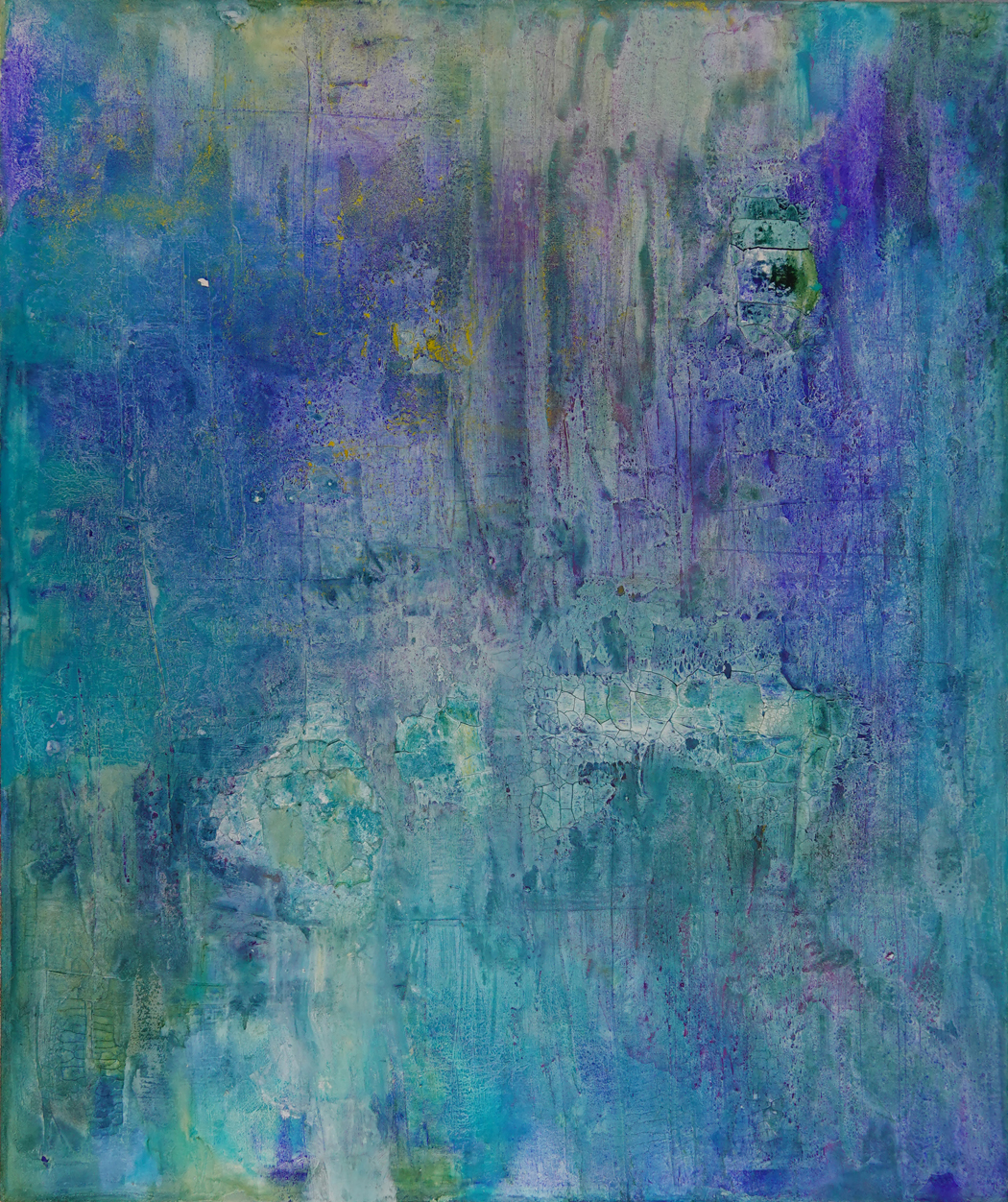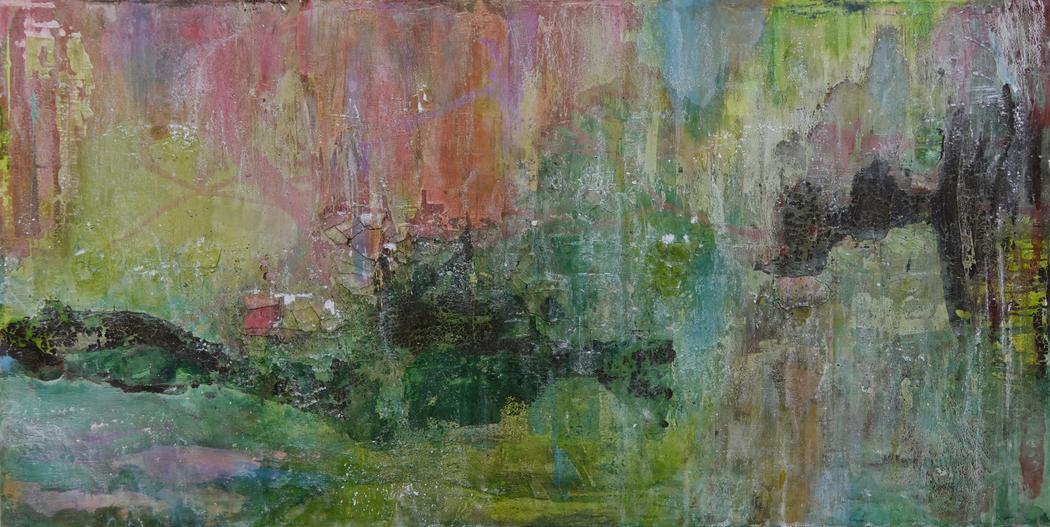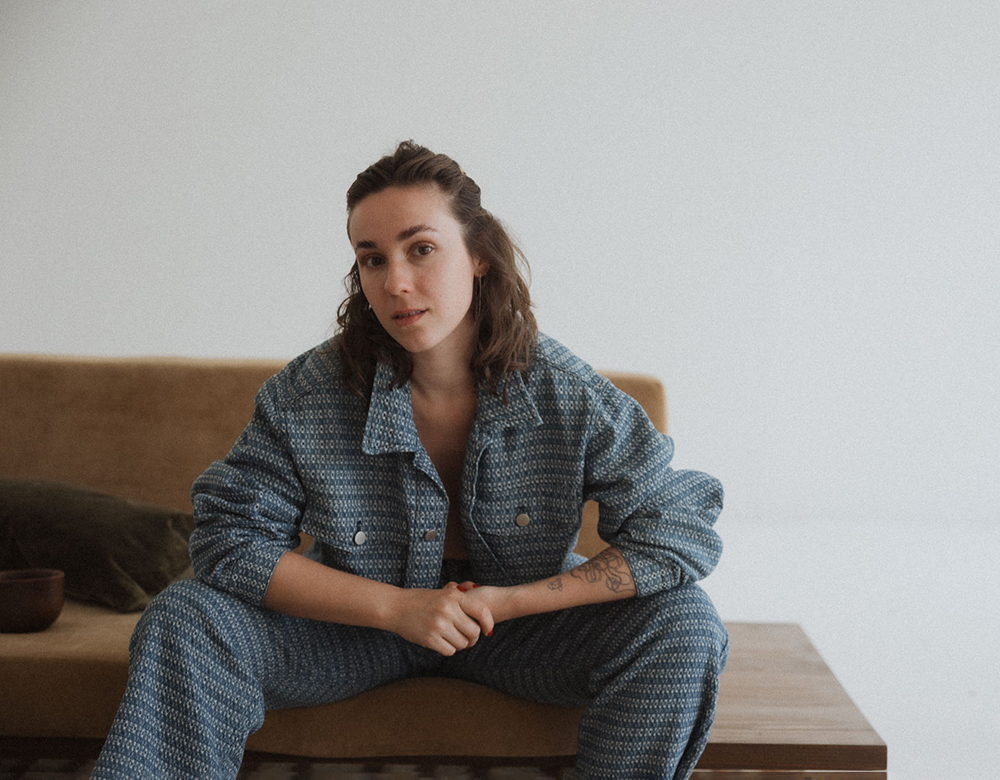Magdalena Kluth
Your work frequently explores emotional expression through material experimentation. How do you decide which materials to combine in a particular piece?
It’s based on a feeling—a form of resonance I’m working to materialize. I choose materials that respond intuitively to that inner state, finding my voice within each piece. There is a knowing and a daily re-discovery how different materials interact, allowing their natural behaviors to guide the development. It’s a conversation between intuition, matter, and emotion.
The element of water plays a symbolic and literal role in your work. Could you tell us more about how you believe water responds to human consciousness and how you incorporate this idea into your process?
I’m fascinated by the idea that water can hold memory and respond to energetic frequencies. This concept—found in both spiritual traditions and scientific exploration—deeply influences how I approach water as a collaborator, not just a medium. Beginning the process of painting by charging the water —through intention-setting, labeling the bottles, or sound—it becomes a carrier of emotion and a responsive field within the work. The way water moves on the canvas, what it absorbs or resists, feels like a direct mirror of inner states.
 Magdalena Kluth | Es Sind Die Kleinen Großen Dinge
Magdalena Kluth | Es Sind Die Kleinen Großen Dinge
Many of your paintings seem deeply personal, almost like emotional landscapes. Do you view painting as a form of healing or emotional processing?
Yes, absolutely. For me, painting is both an emotional release and a way to transmute my experiences. It allows me to access things I might not yet have found language for—or that simply don’t exist in our world yet. The act of layering within each piece—returning again and again— becomes a ritual of remembering and rebalancing. With that, I am for presence – not necessarily resolution. Painting gives shape to the intangible and invites others to meet themselves in it, too.
You’ve mentioned the influence of Hawaiian culture and the word “Akahai” in your work. How did your time in Hawaii shape your artistic philosophy?
Being in Hawai‘i for almost six months shifted something in me. The depth of connection to land, spirit, and story was unlike anything I had experienced before. In the Hawaiian language, akahai— which speaks to kindness with tenderness—is not only a core value but also the first A in the acronym ALOHA. Akahai is a value that deeply resonates with me. It taught me that creation can come from softness, presence, and reciprocity. I started listening more closely—to nature and the people around me, to materials, to space, to energy—and that listening became central to my process.
 Magdalena Kluth | Take My Hand, We Belong Together
Magdalena Kluth | Take My Hand, We Belong Together
How has moving between Miami and Mexico City influenced your creative process and subject matter?
Both cities have contrasting but equally vibrant energies. Visiting Miami regularly offered a kind of expansive light and boldness—it shaped how I embraced color, clarity, and emotional exposure. Living in Mexico City, on the other hand, is rich in textures, layers, and ancestral presence. It’s also where I fully stepped into life as a full-time artist. Being between these places allows me to be reinspired again and again, to hold both vibrancy and stillness within myself and my work.
What role does text play in your artwork titles and descriptions? Are these writings a part of the visual experience or a separate narrative layer?
Almost all of my pieces carry not only a title but also a short text or poem that accompanies them.
These writings often arrive toward the end of a piece and serve as emotional anchors or portals into the work. I don’t see them as separate from the visual language, but rather as extensions of it. Sometimes they’re poetic, sometimes direct—but always meant to evoke feeling rather than explain.
 Magdalena Kluth | Wilderness Of Our Hearts Gentle Persistence
Magdalena Kluth | Wilderness Of Our Hearts Gentle Persistence
Your pieces have a strong tactile quality due to the layers and textures. How important is physicality in your work compared to visual aesthetics?
Very important. The physicality is not just about surface—it’s about memory, tension, and presence. I often build up and then strip away layers, letting traces remain. This speaks to the cycles of experience: how things accumulate, how they’re released, how they leave marks. It’s not just something to look at, but something to feel—to sense its weight, its fragility, its shifts. The tactile aspect is what gives the work its pulse.


Leave a Reply